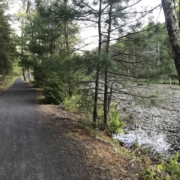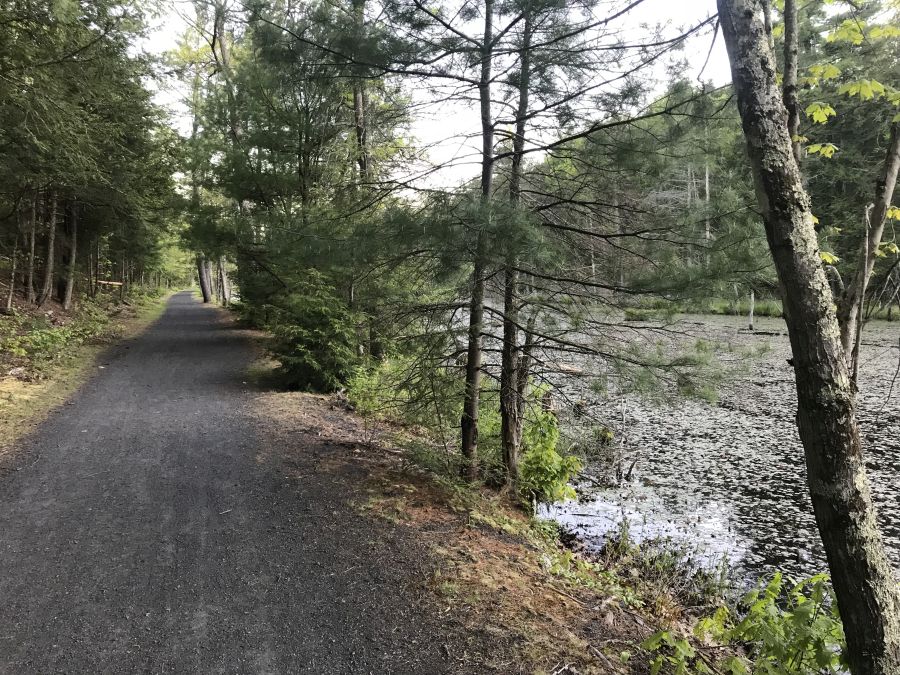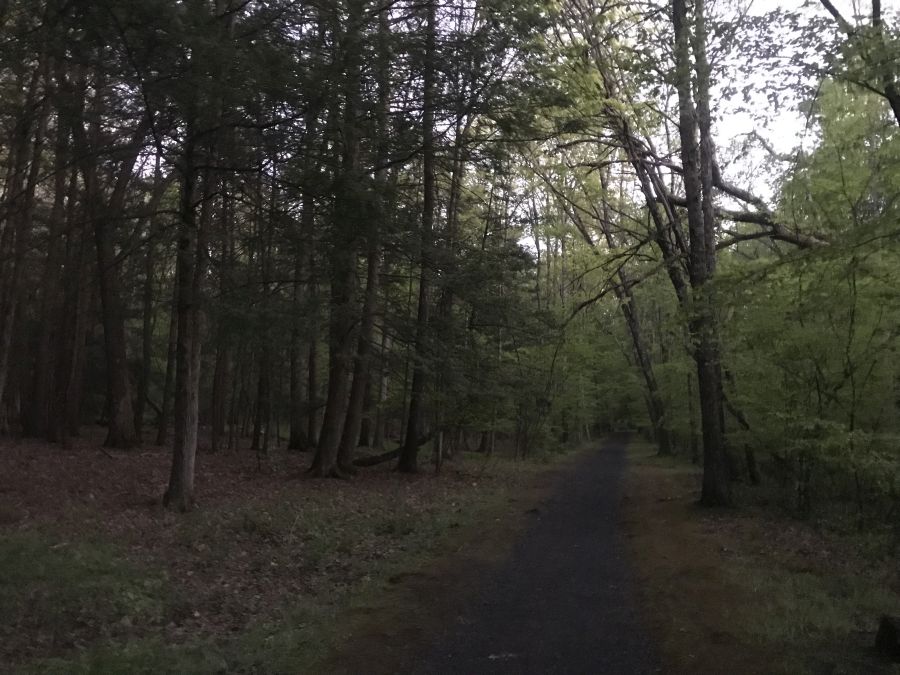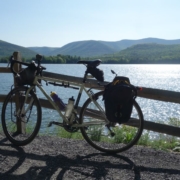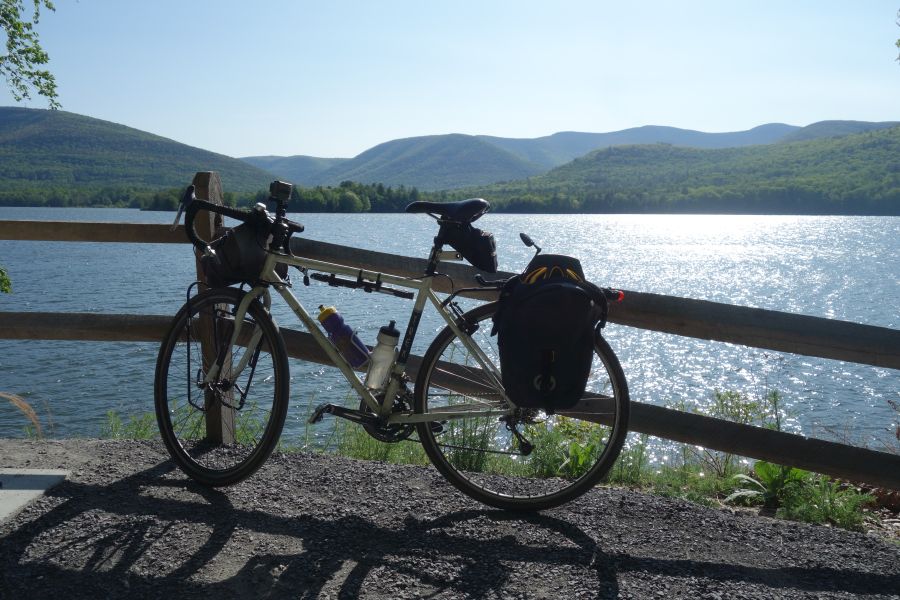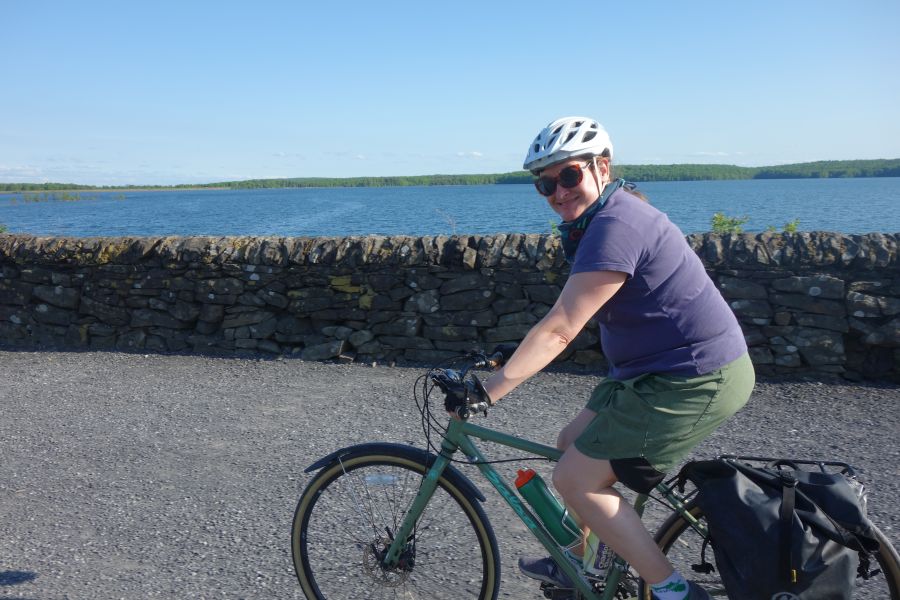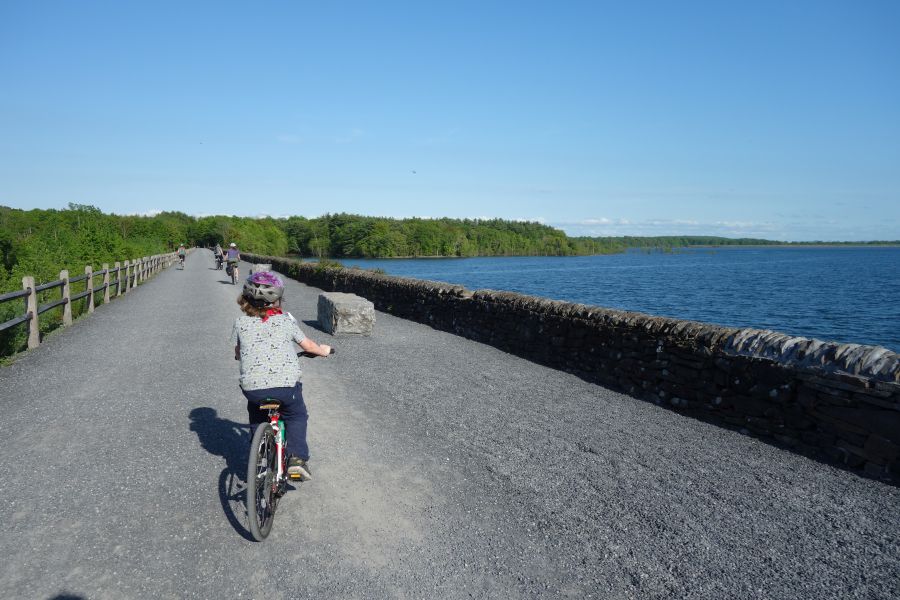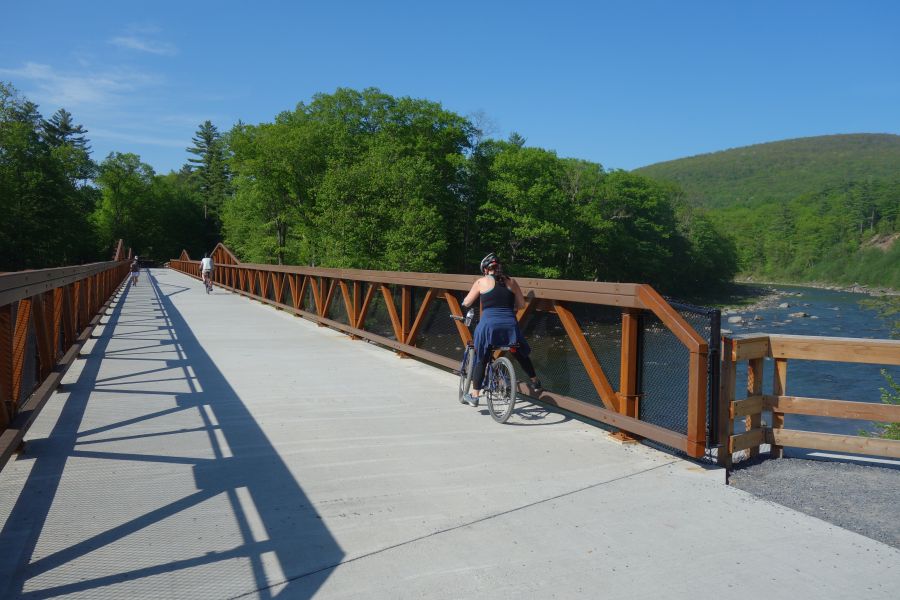Riding the Mario M. Cuomo (Tappan Zee) Bridge Bike Path
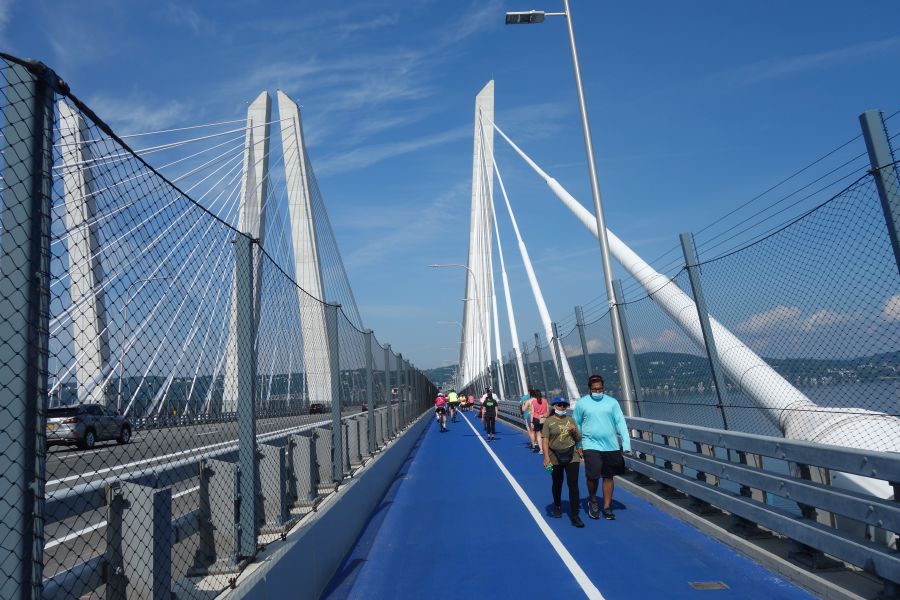
The replacement of the old Tappan Zee Bridge with the new Mario M. Cuomo Bridge has been a long time coming. Everyone hated that old bridge…especially cyclists and pedestrians, because that bridge had never been built with them in mind. How could such a critical link in the Hudson Valley not include bicycles and pedestrians? Finally, the bridge was torn down and replaced. And the last phase of that replacement is now open: the Governor Mario M. Cuomo Bridge Path! (Or to some, the new Tappan Zee bike path).
While it’s annoying that the bike path was the last phase of the bridge to open, everyone is glad it is finally here. This past weekend was its first weekend of operation, and it was packed with visitors! Here’s what you can expect if you ride the new Tappan Zee bike path.

Manage your expectations
If you had the ability to design a brand-new, state of the art, bike path from scratch on a brand new bridge, you’d do something amazing, right? Well that’s not what the Tappan Zee bike path is. It is more or less just a 12-foot car lane repurposed into a multi-use path with a white stripe going down the middle. Pedestrians on one side, bikes on the other. Cross the line at your peril! If you’ve been on a bike path on almost any other local bridge, this is more or less the same deal. You’ve got cyclists of all abilities, all competing for the same space…right next to pedestrians. It is absolutely essential to keep your wits about you. But it’s a great path if you take your time and go slow. But at the same time, it’s also a really good idea to ride this path with a mirror so you can be ready for the packs of lycra-clad riders who come blowing through in a paceline, perilously close to young mothers riding with toddlers on the backs of their bikes.
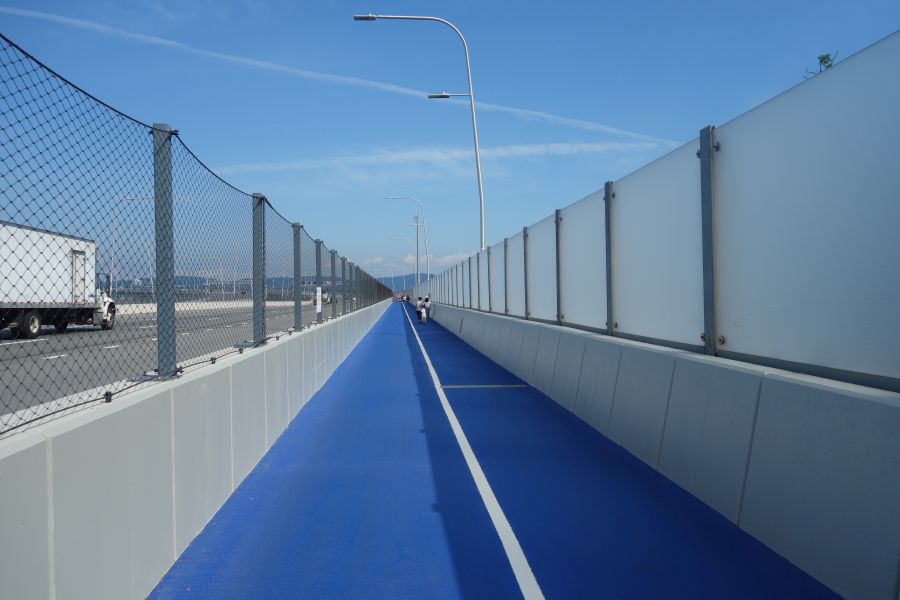
You told me there would be river views! Not here, as opaque panels shield your eyes from something you are not meant to see.
Besides, why not take your time and enjoy the view? It’s fantastic! But if you start out on the Westchester side, you’ll need to wait a bit. For some reason, they put opaque panels blocking your view for the first part of the ride. But then things open up, and there are 6 little rest areas you can stop at to enjoy the view. These rest stops have whimsical names like “Fish and Ships”, but they are mostly just bland seating areas adorned with touchscreen monitors that will inform you about a different Hudson River topic.

It’s time for some “fish and ships” at one of the seating areas along the bridge. Always a nice view. There’s also a touch screen for you to look at and touch.
The seating areas also offer some artistic flair for the bridge along with other public art installations that you can look at. The art is a great distraction from the sounds of 18-wheelers and buses roaring past you. Don’t forget, this bridge carries the NYS Thruway. But at least in the seating areas, the mesh suicide-proof fence between you and the traffic is replaced by glass paneling to attenuate the vehicular noise while you browse those touchscreen panels.
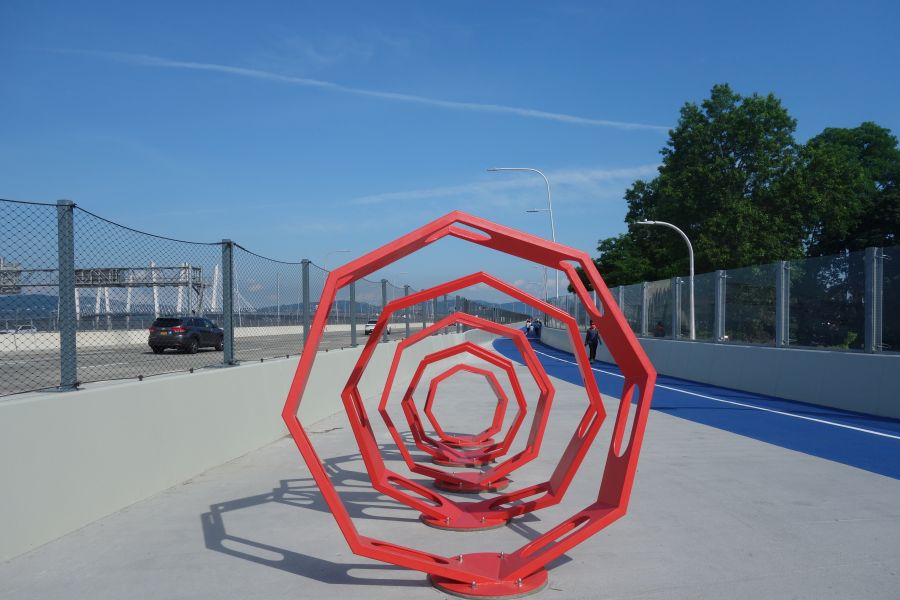
Get lost in public art installations along the bike path.
The Rockland side of the bridge approaches the shore at a much lower elevation than the Westchester side, and dispenses you amidst the tangle of Interchange 10. The space here is tight and narrow-feeling thanks to the concrete sound-barrier walls. But at least you will be in the shade on a hot summer day.
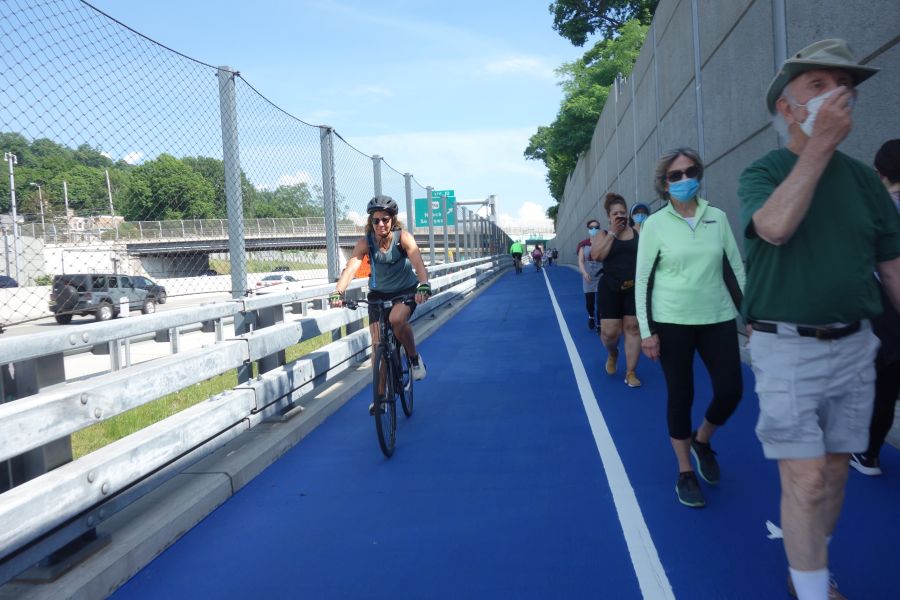
Approaching the Rockland side is “easy-squeezy” as the crowd is shunted between sound barrier walls and the suicide fence next to the traffic.
The bike path has great amenities on both landings of the bridge. Each landing has a clean restroom near the parking lot, although there are few places to lock up your bike while you go inside. Each landing also has at least one food truck and a small area to consume the items you purchase.

Grab a bite from a food truck and eat it on a metal picnic table with absolutely no shade. Public art provides a visual contrast to the pavement that surrounds you.
Getting there
The Mario M. Cuomo Bridge is unique, compared to other bridges with bike paths, in that it has free parking for people to drive to the bridge and then ride or walk across it. But the bridge is also connected to other bike paths on both sides of the river, so you can also ride your bike to it. On the Westchester side, the bridge is very close to the Old Croton Aqueduct Trail and the Westchester RiverWalk trail. It is easy to ride from these trails to the bridge by riding on the sidewalk of Route 9 between the trail and the bridge. You can also ride in the road if you want to.

This severe-looking design was clearly invented by the highway engineers. Welcome to the parking area.
On the Rockland side, the bridge connects directly to the Esposito Trail, which in turn will take you directly to downtown Nyack. Nyack is probably the easiest community to visit when you are riding the bridge’s bike path. On the Westchester side, you can also visit Tarrytown, but you’ll have to ride down busy Route 9 to get there. You could also go the other way and ride to Irvington, using the Old Croton Aqueduct or RiverWalk trails.
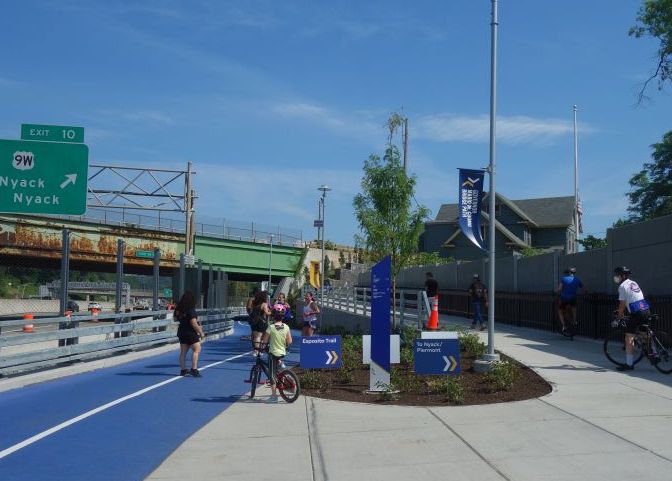
The bridge’s bike path connects to other trails. Clear signage ensures you will not get lost.
Another way to get to the bridge’s bike path is to use the Hudson Link bus. These buses ply the I-287 corridor and offer stops near the bike path during certain times of the day. The buses all have bike racks that hold up to 3 bikes. So you can ride or walk the bridge one way, then take the bus back.

Hey! Don’t forget that the current governor named the bridge after his father, a previous governor. These signs ensure you don’t forget.


